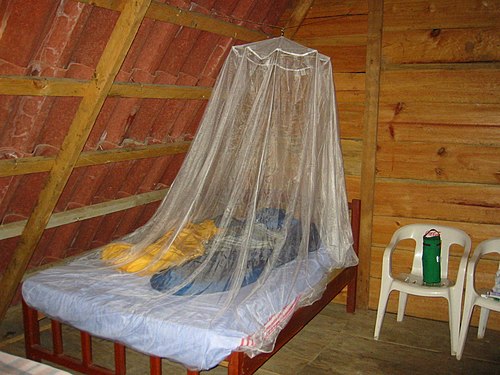Mortality rates for malaria have dropped by over 25% worldwide since the beginning of the millennium, according to World Malaria Report 2011, issued by WHO (World Health Organization). Progress in Africa has been especially impressive, where death rates have dropped by 33% since 2000. WHO says these encouraging figures are mainly due to a considerable scaling up of prevention and control measures over the last ten years. Examples include much wider usage of bed nets, improved diagnostics, and better access to effective malaria medications.
However, as funding slows down and actually shrinks, WHO warns that all these gains could easily be lost, especially as drug and insecticide resistance are becoming ever-growing problems.
Dr Margaret Chan, WHO Director-General, said:
“We are making significant progress in battling a major public health problem. Coverage of at-risk populations with malaria prevention and control measures increased again in 2010, and resulted in a further decline in estimated malaria cases and deaths. But there are worrisome signs that suggest progress might slow.”
The reports states that death rates and the incidence of malaria have both fallen in all regions around the world. In 106 endemic countries and territories there were 216 million malaria cases in 2010. Approximately 91% of malaria deaths in 2010 occurred in Africa – 86% of all malaria cases last year also occurred in Africa.
36,000 fewer people died from Malaria in 2010 compared to the 655,000 in 2010. The authors of the report say that while this annual-5%-decline is encouraging, figures are still far too high for a disease that is both treatable and preventable.
Raymond G. Chambers, the UN Secretary General’s Special Envoy for Malaria, said:
“With malaria deaths in Africa having fallen significantly since 2000, the return on our investment to end malaria deaths has been greater than any I have experienced in the business world. But one child still dies every minute from malaria – and that is one child and one minute too many.
The toll taken by the current economic crisis must not result in our gains being reversed, or progress slowed. With Secretary-General Ban Ki-moon’s charge for near zero deaths by end of 2015, turning back now is not an option.”

Mosquito netting – ceiling hung
Nets – low-cost, durable insecticidal nets have been extremely effective in combating malaria. 885 million bed-nets were delivered to sub-Saharan Africa in 2009; this figure jumped to 145 million in 2010. Approximately half of all homes in this part of the world now have at least one bed net. 96% of those who are able to access bed nets use them.
Diagnostic testing, a vital part of the combat against malaria, has also become more widely available. This is important, because health care professionals and local services can accurately distinguish malaria from other febrile illnesses. In 2008, about 45 million diagnostic tests were delivered by manufacturers, this figure rose to 88 million in 2010. WHO reports that “the testing rate in the public sector in the WHO African Region rose from 20% in 2005 to 45% in 2010.”
Anti-malarial drugs – 181 million courses of ACTs (artemisinin-based combination therapies) were procured by WHO in 2010, compared to 158 million in 2009 and 11 million in 2005. Health bodies around the world recommend ACTs as the first-line treatment for Plasmodium falciparum, the most aggressive and deadly malaria parasite.
Funding from all governments and organizations around the world reached $1.7 billion in 2010, and $2 billion in 2011. However, in order to achieve annual global malaria targets, between $5 and $6 billion are needed.
Even though some countries have increased funding this year and next, a slight decrease is expected globally in 2012 and 2013 when all donors totals are added up. If the current trend continues, 2015 will see funding dropping to $1.5 billion.
A fall in funding will rapidly widen the shortfall, which could seriously undermine the malaria control landscape. In order to build on past progress, or at least sustain whatever has been achieved so far, more money is needed.
Without these donations, the following vital components of malaria control will not be supplied in proper amounts:
- bed nets
- diagnostic testing
- indoor residual spraying
- research and innovation.
- treatment
Dr Robert Newman, Director of WHO’s Global Malaria Program, said:
“We need a fully-resourced Global Fund, new donors, and endemic countries to join forces and address the vast challenges that lie ahead. Millions of bed nets will need replacement in the coming years, and the goal of universal access to diagnostic testing and effective treatment must be realized. We need to act with urgency and resolve to ensure that no-one dies from malaria for lack of a 5 dollar bed net, 1 dollar antimalarial drug and a 50 cent diagnostic test.”
Plasmodium falciparum is becoming resistant to artemisinins. There were cases confirmed in 2009 in the border between Thailand and Cambodia, and then in other sites in Viet Nam and Myanmar.
Artemisinins and their derivatives are a group of medications that contain the fastest action of all available medications against falciparum malaria.
WHO is asking nations to stop the marketing of oral artemisinin-based monotherapies, because it is thought to have been one of the main factors contributing to the emergence of resistance, as well as its spread.
Twenty-five nations still allow the marketing of oral artemisinin-based monotherapies, despite international pressure. Twenty-eight drug companies still market them (in 2010 there were 39).
Resistance to insecticides is also a growing problem. The report informs that over 45 countries have reported cases of resistance to at least one of four types of insecticides currently used for malaria (vector) control – twenty-seven of them in sub-Saharan Africa.
Pyrethroids are the most commonly used compounds for spraying indoors. They are the only type of insecticide used for spraying on nets.
Written by Christian Nordqvist